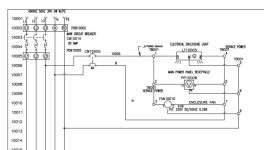kamenges
Member
I am designing a machine for use in the European Union. The machine will include a Ropex heat seal controller that will receive a 230VAC single phase supply derived between one of the machine 3-phase supply lines and the supply neutral. The Ropex documentation indicates that the controller should use a 2-pole breaker to supply the controller, which means the neutral will contain overcurrent protection.
For a machine in the US I would typically not put an overcurrent protection device in the neutral conductor path. Is it common practice to do this in EU installations?
Keith
For a machine in the US I would typically not put an overcurrent protection device in the neutral conductor path. Is it common practice to do this in EU installations?
Keith






